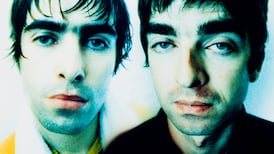There are any number of ways you could attempt to explain what makes Canada’s leading living pianist Marc-André Hamelin special.
He’ll turn 57 in September and he’s been recording since he was in his 20s. So you could point to his extensive discography, which runs to over a hundred CDs. His recordings for the Hyperion label alone run to over 900 pieces.
But to look at the extent would be to miss the point. Other pianists have copious discographies. Alfred Brendel’s complete Philips recordings were issued as a set in 2015 and ran to 114 CDs, and the recordings he made earlier in his career add a further 35.
Brendel is actually a useful comparison. His repertoire, especially later in life, was highly focused. There are multiple recordings of the complete Beethoven sonatas and concertos and of selected Schubert sonatas and Mozart concertos.
Yes, in his youth he did record exceptionally demanding works that few people would now associate with him: Stravinsky’s Three Movements from Petrushka, Balakirev’s Islamey and Prokofiev’s Fifth Piano Concerto. But the range of repertoire is significantly narrower than the reach of Hamelin’s.
Hamelin's home territory is well on the dangerous side of anything that Brendel ever played in public. I interviewed him two years ago in Munich , in advance of his 2017 two-piano Stravinsky concert with Leif Ove Andsnes.
Very pianistic
His big enthusiasm at the time was the piano music of the Russian pianist and composer Samuil Feinberg, which he describes as very polyphonic, very pianistic, extremely close-knit, “the kind of thing I love”. Feinberg, who made distinguished, often highly reflective recordings of Bach and Mozart, wrote in a florid, post-Scriabin style that is utterly unlike the poised reserve he often showed as a pianist.
One of Hamelin’s earliest Irish appearances was in a BBC invitation concert in the studio of the newly-opened Waterfront Hall in Belfast in 1997. He played works by Liszt and paired them with the Concerto for solo piano by Charles-Valentin Alkan, a French contemporary of Liszt whose rippling cascades and torrents of parallel octaves scare off players who are happy to take the lesser demands of Liszt head-on.
One of Hamelin’s early CDs was of the six piano sonatas by Moscow-born Sophie-Carmen Eckhardt-Gramatté (1899-1947) whose six stream of consciousness-like piano sonatas were all composed before she settled in Winnipeg in 1954.
Helicopter view
Hamelin, of course, is not unique in having the technical facility for such demanding music and the interest in bringing it to the public’s notice. What makes him so special is the way his facility and fluency give him what you might call a helicopter view of what he’s playing.
It’s as if his muscles work in a different way to other pianists. To make an analogy with automotive power, it’s as if he has torque and to spare, so that in situations where most players slow down slightly, show signs of somehow changing gear, reveal signs of fatigue or try simply to mask their limitations through the use of rubato that gives them breathing space, Hamelin can keeping going without interruption in a straight line or on whatever curve he thinks the music needs.
He is in a class of his own in the extent to which he can make the well-nigh impossible seem effortless
I’m not suggesting for a moment that he never, so to speak, runs out of road. He’s human. But, even when you compare him with other specialists in the hugely demanding repertoire he’s so fond of, he’s got a Duracell Bunny kind of endurance that leaves most of the competition standing.
I know it sounds paradoxical, but one of his key characteristics is a virtuosity that doesn’t need to draw attention to itself. His playing has a natural fluidity that doesn’t seem demonstrative. He is in a class of his own in the extent to which he can make the well-nigh impossible seem effortless.
At the National Concert Hall last Thursday, his first solo concert in Dublin, his programme was typically personal. A number of works from the standard repertoire –Schumann's great Fantasy in C, Fauré's Sixth Nocturne, Chopin's Polonaise-Fantaisie and Fourth Scherzo – rubbed shoulders with Mario Castelnuovo-Tedesco's rarely-heard Cipressi and six arrangements by the late Alexis Weissenberg of songs by and associated with the French singer-songwriter Charles Trenet.
Foreign language
Most classical musicians approach music by the likes of Trenet as if they’re being asked to speak in an unfamiliar, foreign language. Hamelin does it as well as he speaks English – you would rarely suspect that French is his first language. His Fauré had a wonderful, easy directness. And the right hand’s spilling roulades in the Chopin Scherzo were played with exceptional lightness, delicacy and evenness.
The evening as a whole was hugely impressive in an intriguingly laid-back way. In spite of the inescapable fact of his phenomenal virtuosity, Hamelin’s approach seems focused not on highlighting anything to do with himself, but presenting an exceptionally clear perspective on the music he has chosen. A memorable night.
And the following night Leonard Slatkin’s debut with the RTÉ National Symphony Orchestra showed in Elgar’s Enigma Variations the kind of emotional traction, surefooted pacing and well-judged dynamic shaping that was lacking in the Royal Philharmonic Orchestra’s performance under Pinchas Zukerman in March. Here’s hoping the orchestra has him back sooner rather than later.











